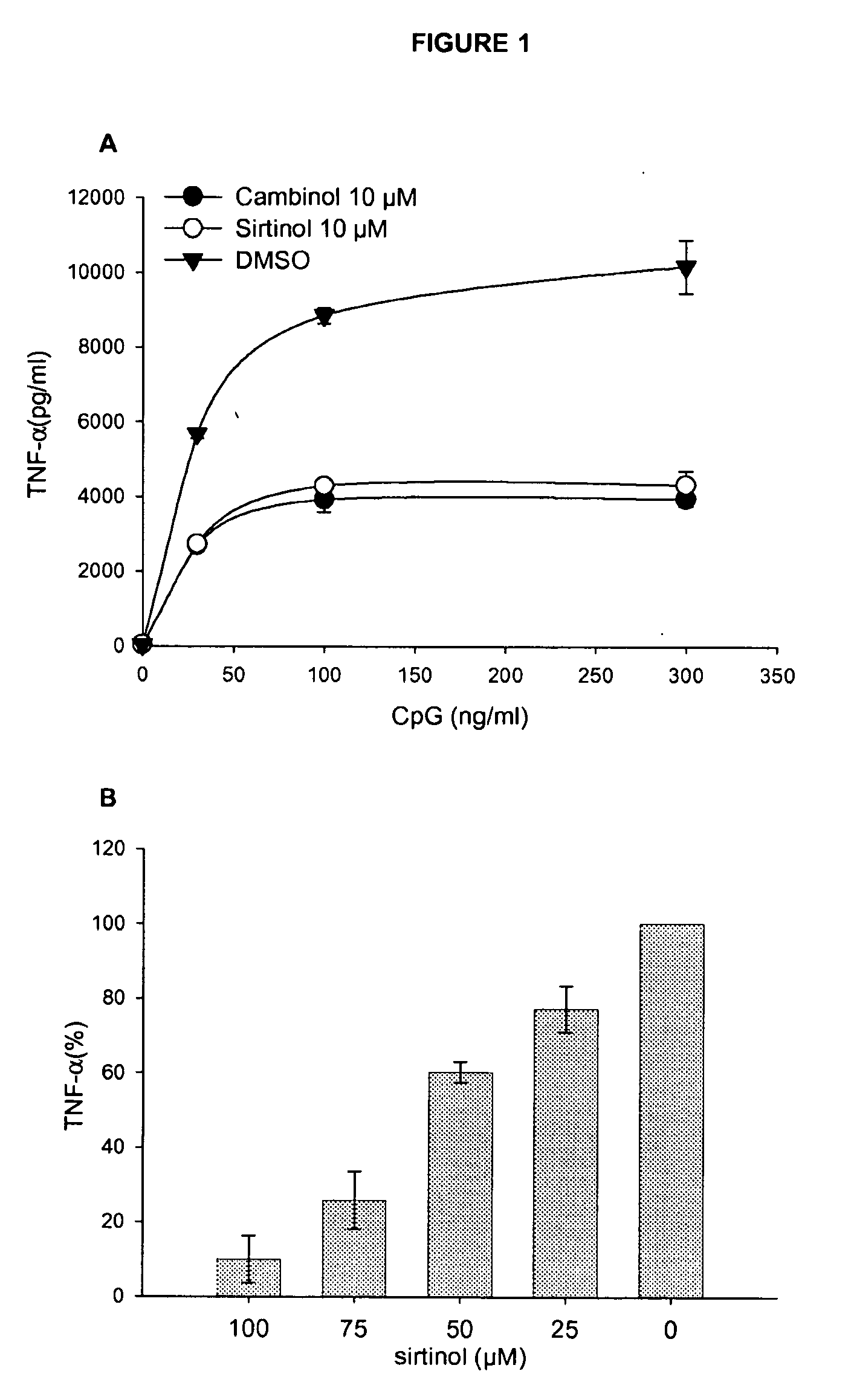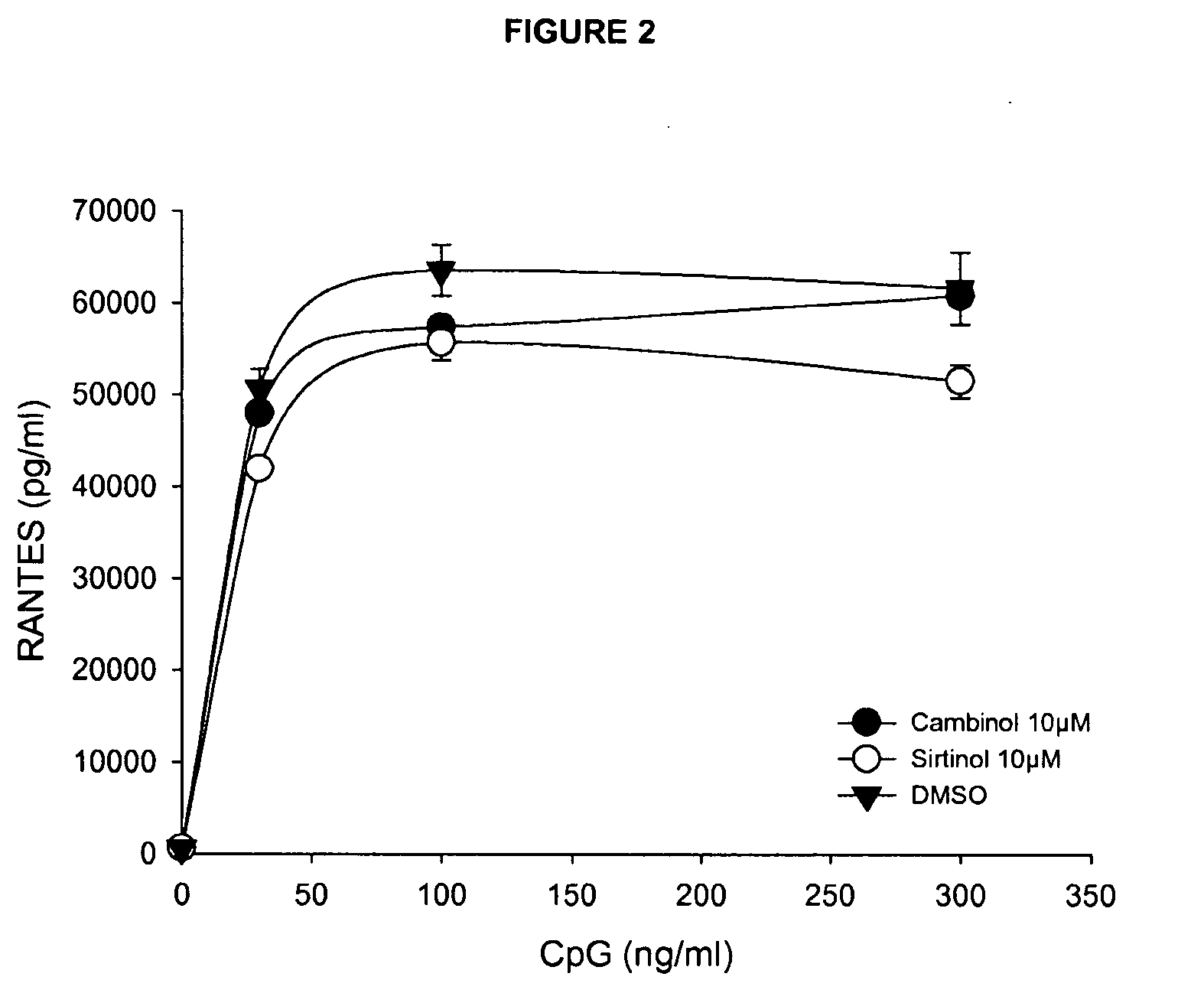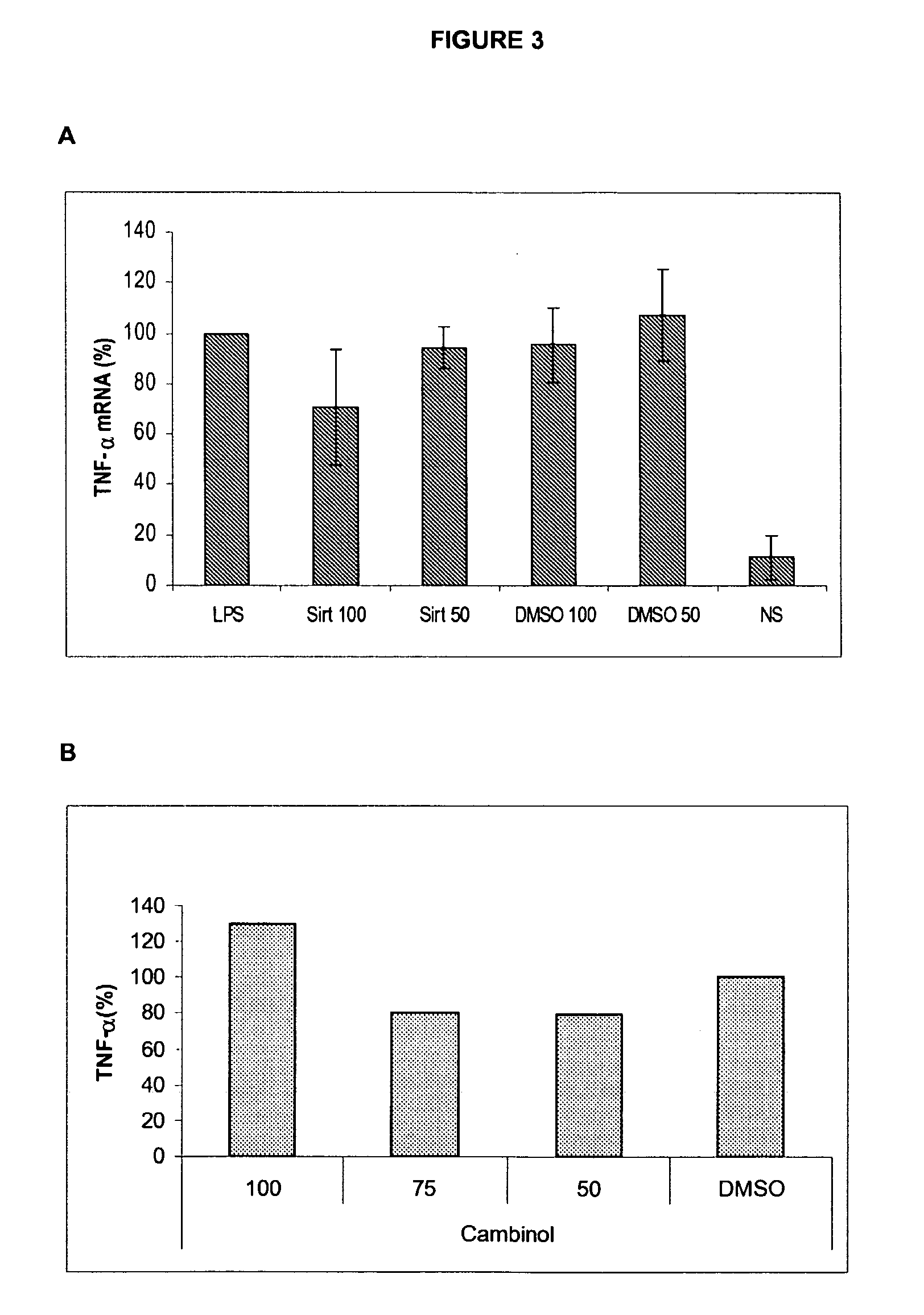Prophylactic and therapeutic use of sirtuin inhibitors in tnf-alpha mediated pathologies
a technology of tnf-alpha and sirtuin, which is applied in the field of tnf-alpha mediated pathologies, can solve the problems of not being able to suggest the use of cell-permeable sirtuin inhibitors, and being highly non-selective, so as to reduce the production of tnf-alpha, and reduce the production of tnf-al
- Summary
- Abstract
- Description
- Claims
- Application Information
AI Technical Summary
Benefits of technology
Problems solved by technology
Method used
Image
Examples
example 1
[0119]Sirtuin Inhibitors Dowregulate TNF-α Secretion (FIG. 1)
[0120]Murine dendritic cells (FIG. 1A) or the murine macrophage-like cell line RAW264.7 cells (FIG. 1B) were cultured in the presence of sirtuin inhibitors as indicated or an equivalent amount of solvent (DMSO) and stimulated overnight with graded doses of CpG (FIG. 1A) or for 2 h with 100 ng / ml of lipopolysaccharide (LPS) from gram-negative bacteria. Cell supernatants were tested for tumor necrosis factor (TNF-alpha) content by ELISA. The figure demonstrates that sirtuin inhibitors donwregulate TNF-alpha secretion induced by microbial compounds.
example 2
[0121]Downregulation of TNF-α Cytokine Secretion by Sirtuin Inhibitors is not Due to General Inhibition of Protein Synthesis or Induction of Cell Death (FIG. 2)
[0122]Sirtuin inhibitors failed to inhibit the secretion of RANTES, a pro-inflammatory chemokine secreted upon stimulation by microbial compounds. Murine dendritic cells were cultured in the presence of sirtuin inhibitors as indicated and stimulated overnight with graded doses of CpG. Cell supernatants were tested for RANTES content by ELISA. This experiment demonstrates that sirtuin inhibitors do not inhibit RANTES secretion in response to CpG, indicating that these compounds do not inhibit the protein synthesis machinery of the cell in a non-specific fashion, nor affect cell viability in culture.
experiment 3
[0123]Sirtuin Inhibitors Downregulate TNF-α Cytokine Production without Affecting the Intracellular Accumulation of TNF-Alpha mRNA (FIG. 3).
[0124]RAW264.7 were incubated in the presence of sirtuin inhibitors or equivalent doses of solvent (DMSO) as indicated and stimulated for 2 h by LPS. Expression of mRNA encoding for TNF-α was monitored using quantititative RT-PCR using standard procedures and the following forward and reverse primers (fwd: gcctccctctcatcagttcta; rev: gctacgacgtgggctacag). The present experiment demonstrates that while sirtuin inhibitors (sirtinol, cambinol) inhibit TNF-α protein synthesis (see FIG. 1 as an example), they do not significantly affect TNF-alpha mRNA accumulation in response to microbial compounds. Collectively, these observations indicate that sirtuin inhibitors may affect TNF-alpha secretion by interfering with at a post-transcriptional step.
PUM
| Property | Measurement | Unit |
|---|---|---|
| molecular mass | aaaaa | aaaaa |
| molecular mass | aaaaa | aaaaa |
| molecular mass | aaaaa | aaaaa |
Abstract
Description
Claims
Application Information
 Login to View More
Login to View More - R&D
- Intellectual Property
- Life Sciences
- Materials
- Tech Scout
- Unparalleled Data Quality
- Higher Quality Content
- 60% Fewer Hallucinations
Browse by: Latest US Patents, China's latest patents, Technical Efficacy Thesaurus, Application Domain, Technology Topic, Popular Technical Reports.
© 2025 PatSnap. All rights reserved.Legal|Privacy policy|Modern Slavery Act Transparency Statement|Sitemap|About US| Contact US: help@patsnap.com



